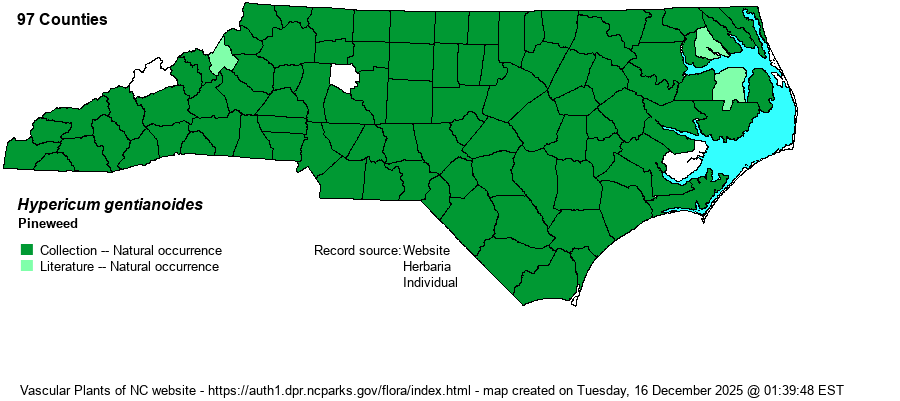| Author | (L.) Britton, Sterns, & Poggenburg | |
| Distribution | Occurs throughout the state, and presumably is found in all 100 counties.
This is a wide-ranging species of the eastern U.S. It ranges from southern Canada to the Gulf Coast but is not widespread in the Great Lakes states.
| |
| Abundance | Common to very common across the state, except only fairly common to common in the mountains. | |
| Habitat | This is a species of sunny, dry habitats. It grows in abandoned fields, roadsides, woodland borders, rock outcrops, and powerline clearings; it is likely the most often seen member of the genus in the state. |
| Phenology | Blooms from July to October, and fruits shortly thereafter. | |
| Identification | This is a small and quite slender herbaceous species growing only to an average of 9-12 inches high, with many upright branches. All of the branches are green, and as the leaves are very short, scale-like and appressed to the stems, the whole plant looks like a bunch of leafless green twigs angled sharply upward. The small yellow flowers occur singly along the stem and at the tips of the stems. As this is such a common and widespread species, most observers should be able to find this species easily and recognize this slender plant quickly at a single glance. | |
| Taxonomic Comments | None
| |
| Other Common Name(s) | Orange-grass, Orange-grass Pineweed, Gentian-leaved St. John’s-wort. Though Pineweed is colloquial and provides no indication of genetic relationship, this has been the most widely used common name in field guides and most references for decades. A number of websites now use Orange-grass as the common name or as part of the common name. | |
| State Rank | S5 | |
| Global Rank | G5 | |
| State Status | | |
| US Status | | |
| USACE-agcp | FACU link |
| USACE-emp | UPL link |

